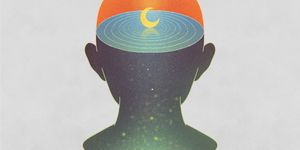Labroots' Top 10 Scientific Discoveries of 2022
2022 was a big year for science, so let’s take a look at some of the most interesting -and important- scientific discoveries that made headlines over the past 12 months in no particular order.
10. The Human Genome Sequence is Finally, Truly Complete
While the Human Genome Project was finished in 2002, it was really only 92% complete. In April of this year Labroots Science Writer Carmen Leitch reported that the last missing pieces of the sequence were finally filled in. The ‘junk DNA’ sequences that were initially left out of the 2002 ‘completed’ sequence are now known to be considerably more important than previously thought.
9. What We Know About the Tonga Volcano Eruption
Back in January 2022 the Hunga Tonga-Hunga Ha’apai volcano (shortened to Tonga volcano) near the Kingdom of Tonga in the Pacific Ocean erupted and triggered tsunamis and power outages across 80% of the population of the ~170 nearby islands. The volcano began to erupt in late December of 2021, however it was on January 15th, 2022, that a larger blast, equivalent to 4-18 megatons of TNT, took place and spread volcanic ash across the islands.
8. Astronomers Photographed the Black Hole at the Center of Our Galaxy
50 years ago, a supermassive black hole was discovered at the center of our galaxy and was designated Sagittarius A* (Sgr A*). While other black holes exist in our galaxy, Sagittarius A* is the closest supermassive black hole to us here on Earth. The Event Horizon Telescope (EHT), the collaborative effort of 80 globally located institutions, captured numerous images that were combined to create a complete picture.

7. NASA Releases the First Images from the James Webb Space Telescope!
While we are in space, we might as well talk about the James Webb Space Telescope (JWST). Launched on December 25th, 2021, the JWST is an infrared space observatory that is capable of taking utterly fantastic images of our universe. On Monday, July 11th 2022, the first image, dubbed “Webb’s First Deep Field” was released during a press conference with President Joe Biden. Since then the James Webb Space Telescope has been keeping us on our toes with new images of the Pillars of Creation, the Cartwheel Galaxy, and Saturn’s moon Titan. The observatory has also captured a star in the middle of formation, the first exoplanet atmosphere, and most recently, has made it possible for astronomers to measure the light between galaxies. No guessing what else we will learn about our Universe with this incredible technology.
Credit: NASA, ESA, CSA, STScI
6. FDA Approves the First Drug Made from the Fecal Microbiome
Last week news broke that the first fecal microbiota product, Rebyota, had been approved by the US FDA. While it may sound strange this is a big deal for treating difficult gut infections like C.diff (C. difficile). This type of treatment also holds potential for advancements in immunotherapy. Studies published in both Science and Nature explored the possibilities of boosting immunotherapy treatments by altering the microbiome of a patient.
5. Clinical Trial Demonstrates an Amazing 100% Response
It’s not every day that a clinical study results in a 100% success rate. In this case, a team of researchers carrying out a phase 2 study to treat a specific type of rectal cancer were testing a drug called dostarlimab. In June of 2022 the results of the study were published in the New England Journal of Medicine. Of the 12 patients who completed treatment, all 12 demonstrated a complete response with no evidence of a tumor present!
4. A Mystery Solved - Why Colds & Flu Are More Common in Winter
Why does everyone always get sick in the winter? It’s almost assumed at this point that someone will get sick every winter with a cold, the flu, and now COVID, but why this happens was not previously understood from a scientific standpoint. A new study in the Journal of Allergy and Clinical Immunology suggests that cold weather does actually interfere with how our immune system responds to pathogens, specifically in the nose. So, what happens in our nose that makes this difference? Essentially a decrease in nasal temperature (of about 9° Fahrenheit/5° Celsius) destroys ~50% of the vesicles in the nose that fend off viruses and bacteria.
3. Meet Nun Cho Ga, The Latest Frozen Mammoth Discovered in Canada!
In July, gold miners working in the Klondike mines in Canada’s Yukon territory discovered the frozen body of a non-adult woolly mammoth. This mammoth, dated to between 30-35K years ago, was recovered almost fully intact with flesh and fur. Finds like this are few and far between, but never fail to capture the imagination and provide fascinating scientific data. What can we learn from this little mammoth? By testing the tissues (hair, tusks, teeth, nails, internal organs, and more) we can learn so much about ecosystems, environments, and about these now-extinct animals.
2. Researchers Create the Largest Family Tree, For All Humanity
Interested in your own family tree? Researchers took it a massive step further and created a family tree for humanity that stretches back thousands of years and maps human relationships across the world. This genetic family tree compiled data from modern and ancient populations representing 215 global populations. The results confirmed the origin of modern humans out of Africa.
1. Brain Cells in a Dish Were Taught to Play a Game of Pong
At the very tail end of 2021 something very cool, and a bit strange happened. Scientists in Australia not only grew brain stem cells on a microelectric array, but they were able to teach it to play Pong. Yes, you read that right, Pong. The little ball that bounces back and forth for eternity is now a game that can be played by brain cells on an electrified dish (well is much more complicated than that but you get the idea). While the ‘cyborg’ was able to learn how to play the game in about 5 minutes (faster than AI), the researchers noted that it was not as good at playing the game as either humans or artificial intelligence.
Can’t wait to see what we come up with next year!









